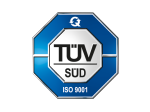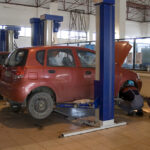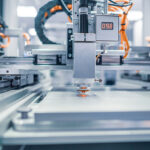The rise of sheet metal fabrication has made it possible for manufacturers to make high-precision components that are also long-lasting. Sheet metal fabrication is found in a great number of everyday products because of its multiple properties.
These offer many advantages, from low costs of production to freedom of customizability. Aside from the high tolerance and aesthetic finish that these sheet metals provide, they are also appropriate for school labs because of their safety, affordability, and strength.
This article lists the advantages of sheet metal fabrication for school labs in detail.
The Process of Sheet Metal Fabrication
The sheet metal fabrication process is classified into three categories: cutting, deforming, and assembling/finishing. These categories include a series of different techniques and methods used for sheet metal fabrication.
#1 Cutting
Cutting is the first step in the process of sheet metal fabrication. As the name suggests, this step consists of cutting the metal sheet. The manufacturers start with a rectangular metal sheet and cut it based on the client’s requirements.
There are various ways of cutting sheet metals, such as laser cutting, shearing, and punching.
Laser cutting is a popular method for cutting various materials, including metal, because it provides a quick, precise, and efficient way of cutting with minimal heat input to the material. The laser beam is controlled by computer-aided design (CAD) software to follow a specific path, producing the desired cut or shape. Since school lab equipment requires extremely high precision, laser cutting is employed commonly.
Shearing is a process that consists of cutting sheet metal without burning or melting it. Here the sheet metal is pressed against a fixed blade with the help of a punch press. The punch press is applied downwards which creates a shearing force to cut the metal. Shearing doesn’t produce any chips in the sheet and leaves smooth ends. It’s a cost-effective method to cut sheets that do not require high precision.
Punching consists of creating holes in the sheet metals by using a punch and die. The holes are created by using shear force. Hence, it’s also a type of shearing. The scrap material is collected by the dye. This method is used for large-scale production.
#2 Deforming
The second step in the sheet metal fabrication process is deforming. This includes a set of different techniques to change and manipulate the shape of the metal sheet without cutting it. These techniques include stamping, bending, spinning, etc.
Stamping is a deforming process that involves the hydraulic or mechanical stamping press which is equipped with a tool and dye. The process is similar to punching, however, it’s not used to cut the sheet metal. It’s used for curling, embossing, flanging, or hemming sheet metal.
Bending is yet another deforming step in the sheet metal fabrication process. As the name states, it consists of bending the metal sheet. Here the metal is bent into various shapes like a V or a U shape, or any angle of up to 120 degrees.
Metal companies carry out this process by using several machines like press brakes, rolling machines, etc.
Spinning is another technique used to deform sheet metal by rotating it as it’s pressed against a tool. This process looks similar to pottery spinning and it is commonly used to create round sheet metal components like cones, or cylinders.
Some lesser-known deforming techniques include wheeling and rolling. Wheeling is used for making compound curves in sheet metal whereas rolling is when sheet metal is pressed between a pair of rollers to reduce its thickness.
#3 Assembling and Finishing
Cutting and deforming are the two ways of forming sheet metal. The third and final step is the assembling of these finished products.
Manufacturers use two ways of assembling sheet metal components which are welding or using fasteners. Fasteners like bolts, screws, and rivets are used to assemble components of sheet metal.
Whereas, welding is a method where heat is applied to melt a section of sheet metal so it can join with another component. The melted parts of the two components are fused which creates a metallurgical bond between them and forms a strong connection when they solidify.
After the metal sheet components are installed together, the finished component is then forwarded for finishing. The finishing gives a quick cleaning or coating which enhances the appearance and physical attributes of the component making it look attractive.
Advantages of Sheet Metal Fabrication
#1 Cost-Effective
Sheet metal is known for being cost-effective. Since school lab equipment is more susceptible to breaking as students are exploring it, sheet metal is extremely affordable while also being high quality, unlike other materials where their price determines their level of quality.
This can easily benefit the schools as they can take advantage of durable and efficient school lab equipment while still staying within their budget.
Moreover, sheet metal fabrication can last a long time because of its durable nature, which means it’s a great choice for schools that can’t afford to buy lab equipment again and again. It’s also an excellent choice for businesses that have a strict budget to follow.
In addition to that, this also has reduced production costs. This is because of the new emerging machines that deliver enhanced levels of productivity at low costs.
#2 Precision
Metal fabrication enables producers to create components with precise features and tolerances. Many sectors invest in sheet metals because they require high precision items.
This is due to the importance of precision while working with particular instruments or equipment. Because of its ductility, sheet metal is easily shaped. This degree of accuracy is achieved by the use of high-tech machines such as CNC. (Computer Numerical Control).
This equipment enables sheet metal to be molded and transformed into components with the tightest tolerances.
#3 Durability and Strength
Sheet metals are well known for their strength because they can withstand any amount of pressure. Sheet metal fabrication uses steel, aluminum, stainless or galvanized steel, and brass. These metals differ in their strength, machinability, strength-to-weight ratio, etc.
For instance, aluminum is the most malleable and lightweight out of all these metals while stainless steel or galvanized steel share similar properties like high durability and corrosion resistance.
These are durable because they are resistant to water, corrosion, and chemicals. This makes sheet metals an ideal choice for school labs because this equipment will be exposed to chemicals and other wet substances.
These metals also have a higher shelf life because they are not damaged easily. This helps reduce its maintenance or replacement costs. Moreover, these are excellent for projects that need long-term durability.
#4 Customizability
One of the biggest advantages that sheet metal provides schools is the freedom of customization. Sheet metal is popular for its high pliability and flexibility as compared to other metals which makes it easy for manufacturers to create any tool or instrument they like.
In addition to their strength and durability, they also have malleability which can let you create customized lab tools according to your preferences. Sheet metal can be bent or stretched without breaking or damaging its strength.
Schools get to have all the creative freedom to generate custom-built designs for their components, or tools. It’s an ideal choice for school labs since the malleability of sheet metals can allow them to be used in creating custom and specialized equipment.
#5 Aesthetics
Sheet metal fabrication leaves behind a modern look with its seamless finish. Metal fabrication has many options for an aesthetic and modern look such as color coating, sand-blasting, polishing, or surface finishing. Clients can choose any finding technique of their preference.
Even if it’s left without any sort of coating or finish, the metalworks look aesthetically pleasing to the eyes. This can overall enhance the appearance of the whole space.
#6 Maintenance and Repairs
Sheet metal fabrication has become widespread, which grants one easy access to maintenance or repair.
If one detects any damage in any of their sheet metal, it’s easy to get it repaired since the individual sheet can be removed from the whole structure and repaired without having to dismantle the whole structure.
Sheet metal fabrication is also easy to maintain. All it needs is proper care and it will last for several years.
#7 Safety
Safety is an important factor in the sheet metal fabrication process. Unlike other materials, sheet metal is a safe and sustainable choice for everyone. Metal is a natural resource which makes it both environmentally and economically ideal.
The sheet metal process is also much safer and more sustainable. Choosing these metals would be suitable for the school labs since they are safe for students to handle because they have non-reactive properties.
Therefore, they have fewer health concerns as compared to other materials. This makes sheet metal a safe choice for school labs where the safety of the students is the top priority.
Conclusion
Overall, sheet metal fabrication in school laboratories has various advantages, ranging from high strength to cost-effectiveness to safety. It is reasonable to state that sheet metal can surpass all other materials in school lab equipment manufacture.
Sheet metal fabrication may provide high-precision items with a contemporary appearance. It allows you creative freedom in creating custom-built designs. These characteristics alone are sufficient to distinguish sheet metals from the perspective of educators.
However, before picking the finest material for the work, it is critical to analyze the individual demands and requirements of each application.
Looking for reliable and high-quality B2B manufacturing solutions? Look no further than Monster Builder! Our expertise in sheet metal fabrication, CNC machining, and 3D printing makes us the go-to choice for your business needs. Contact us today to learn more!






